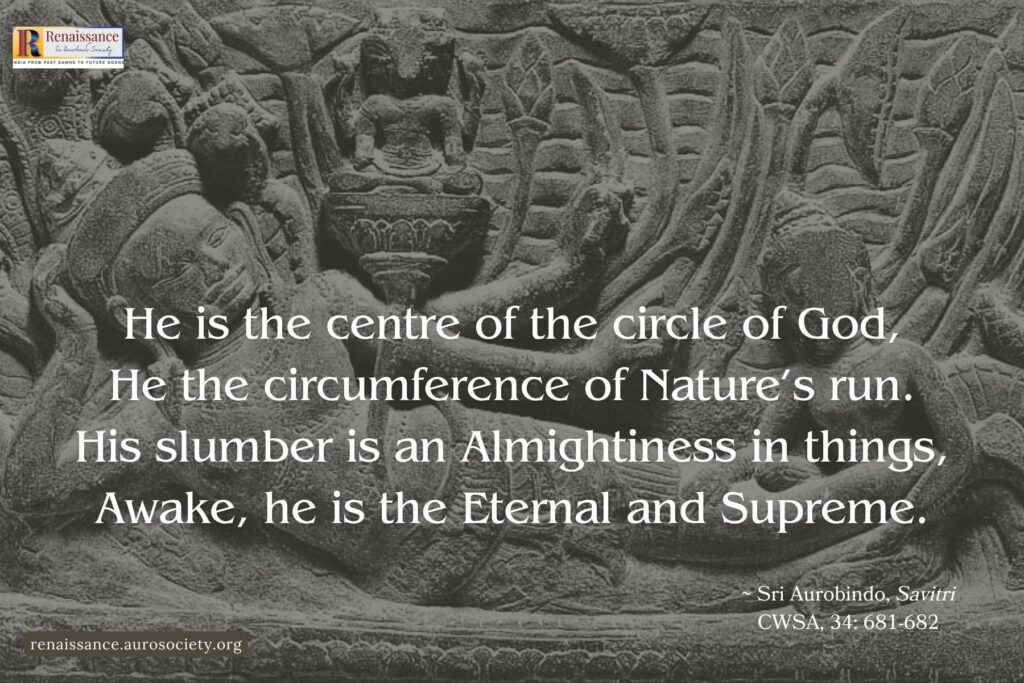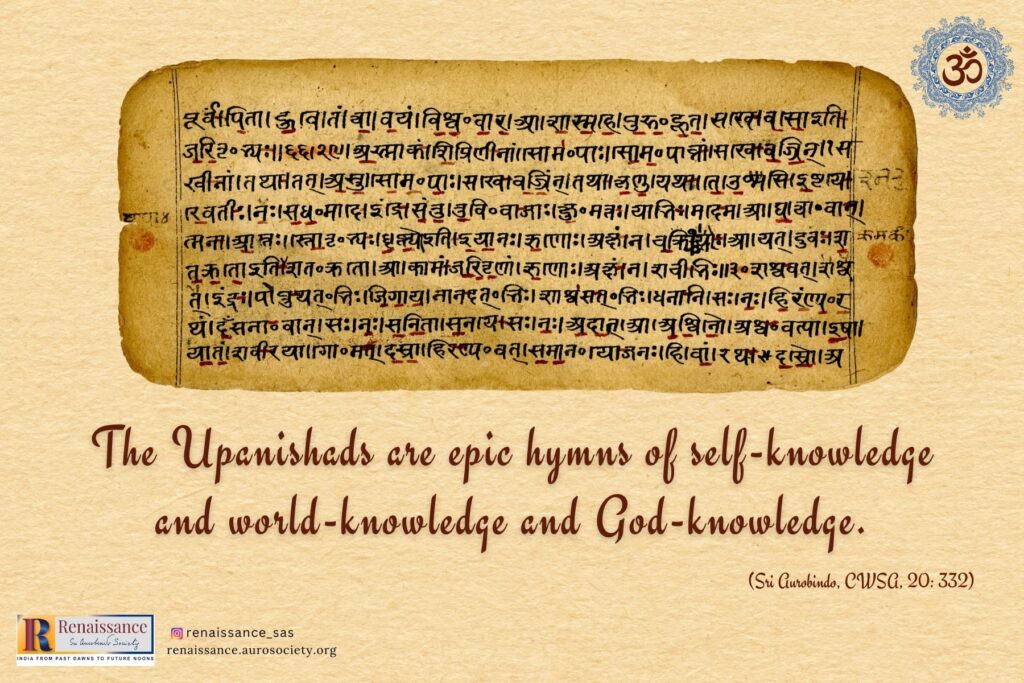Indian culture evolved a scheme of integral human development, with an aim to realise in the individual and collective life the high ideal of the Indian conception of human existence and its ultimate goal. This scheme is based on the four broad pursuits of human life called in the Indian tradition as purushārthas. These aims are:
- Artha: Fulfillment of the material and economic needs and interests
- Kāma: Satisfaction of vital desires and enjoyment, seeking of pleasure
- Dharma: The need of our higher mental and moral being for knowledge, values, ideals and right living
- Moksha: Finally, the spiritual need for the ultimate freedom, fulfillment and perfection.
These aims correspond roughly to the physical, vital, mental and spiritual needs of the human being. They form a system of shared values and are accepted almost by all the cultural traditions emerging from within the Indian thought. These purushārthas are based on the idea that our being must pass through different stages in its growth, and the legitimate needs and desires of each level of the human being have to be fulfilled before he can rise to a higher level.
In an integrated evolutionary perspective of human development emphasized by Indian culture, the satisfaction of the natural needs and propensities of man’s physical, vital and mental being and the fulfillment of his duties and responsibilities are not denied in an ascetic spirit. They are accepted as indispensable parts of his evolutionary growth and development.
Our ancestors clearly understood that the initial movement of human life necessitates the development of the powers of the natural ego. They did not deny the fact that self-interest and pleasure-seeking desire are the original motives for the large majority of the humanity. These are reflected in the first two pursuits of artha and kāma.
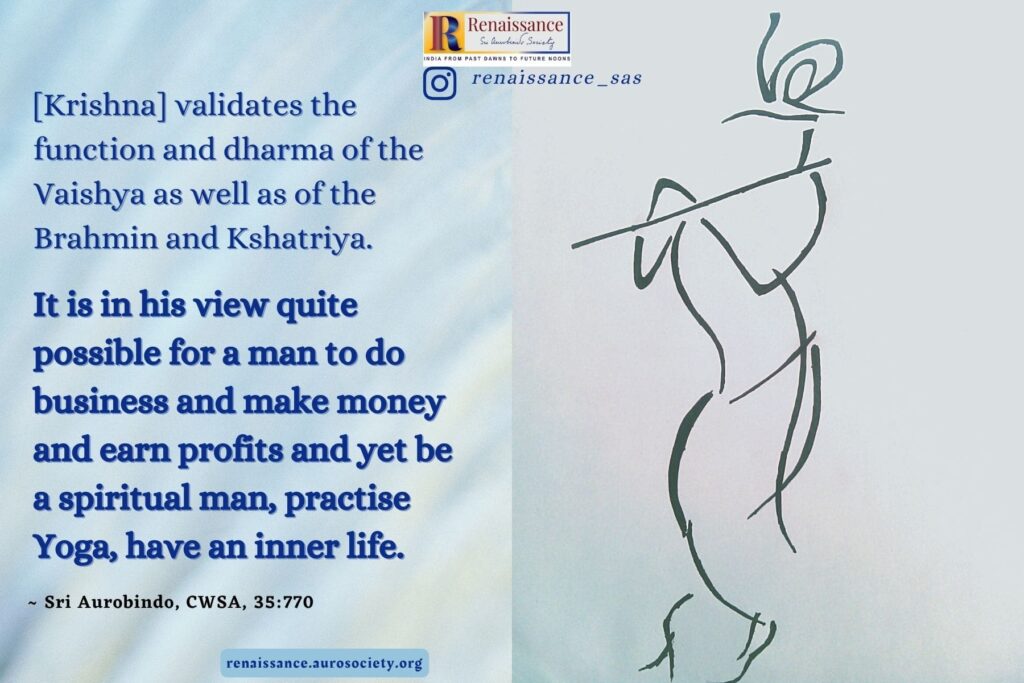
Attitude toward Wealth
Let us focus on the pursuit of artha or the material well-being.
By artha is meant the physical and economic needs, well-being, progress and prosperity of the material being and life — of the individual and the collectivity.
The word artha also means “instrument” which includes all the material, economic, social, political and technological instruments for the fulfillment of the legitimate physical and vital needs of human beings.
It is important to develop a right attitude when pursuing the goal of artha or material and economic well-being.
We find two general attitudes toward artha, wealth, in the Indian tradition. Interestingly, while these two attitudes seem radically opposed to each other both have deep roots in dharmic life as conceived and lived for the most part throughout Indian civilizational history.
Wealth as a Foundation for a Stable Social Order
In texts such as Arthaśāstra as well as the Mahābhārata, wealth was regarded as the first condition not only of a happy and dignified family life but also of a stable social order. It was said that even dharma – the right living, and moksha – the spiritual liberation, are dependent on artha. For example, in the Mahābhārata, we find Bhima drawing Yudhishthira’s attention to this:
धर्ममूलं जगद्राजन्नान्यद्धर्माद्विशिष्यते ।
धर्मश्चार्थेन महता शक्यो राजन्निषेवितुम् ॥ (आरण्यकपर्व, ३४. ४७)Dharma is the foundation of this world; and there is nothing of greater value than dharma. But undoubtedly dharma requires money. Always, dharma is a factor in wealth; but wealth is to be grasped for securing the ends of dharma.
~ Chaturvedi Badrinath, The Mahabharata: An Inquiry in the Human Condition, p. 275
Respect for wealth and its care and protection were taught through popular literature as well. For example, we find the following verse in Panchatantra, the ancient book of fables written by Vishnu Sarma as a means to educate princes:
न हि तद्विद्यते किञ्चिद्यदर्थेन न सिध्यति।
यत्नेन मतिमांस्तस्मादर्थमेकं प्रसाधयेत् ॥ १.२॥There is nothing in the world that cannot be obtained through wealth; let a prudent man therefore earn wealth by his effort.
~ Translation by Badrinath, p. 278
Our ancient tradition never glorified material poverty. Sri Aurobindo, the Mahayogi of 20th century tells us:
The acceptance of poverty is noble & beneficial in a class or an individual, but it becomes fatal and pauperises life of its richness and expansion if it is perverted into a general or national ideal. . .
~ CWSA, Vol. 12, p. 448
He reminds us that ancient India was not merely a spiritually rich culture, but with its ideal of vast riches and vast spending was also the greatest of nations. Only when the greatest of Indian minds were captured with a turning toward asceticism our nation became poor in life & sunk into weakness & degradation.
The Ramayana has given us a picture of an ideal society toward which humanity has been aspiring since ages. According to Sri Aurobindo, this ideal society envisioned by Valmiki “includes among the signs of a just & enlightened state of society not only universal education, morality and spirituality but this also that there shall be “none who is compelled to eat coarse food, none uncrowned & unanointed or who is restricted to a mean and petty share of luxuries” (CWSA, Vol. 12, pp. 447-448).
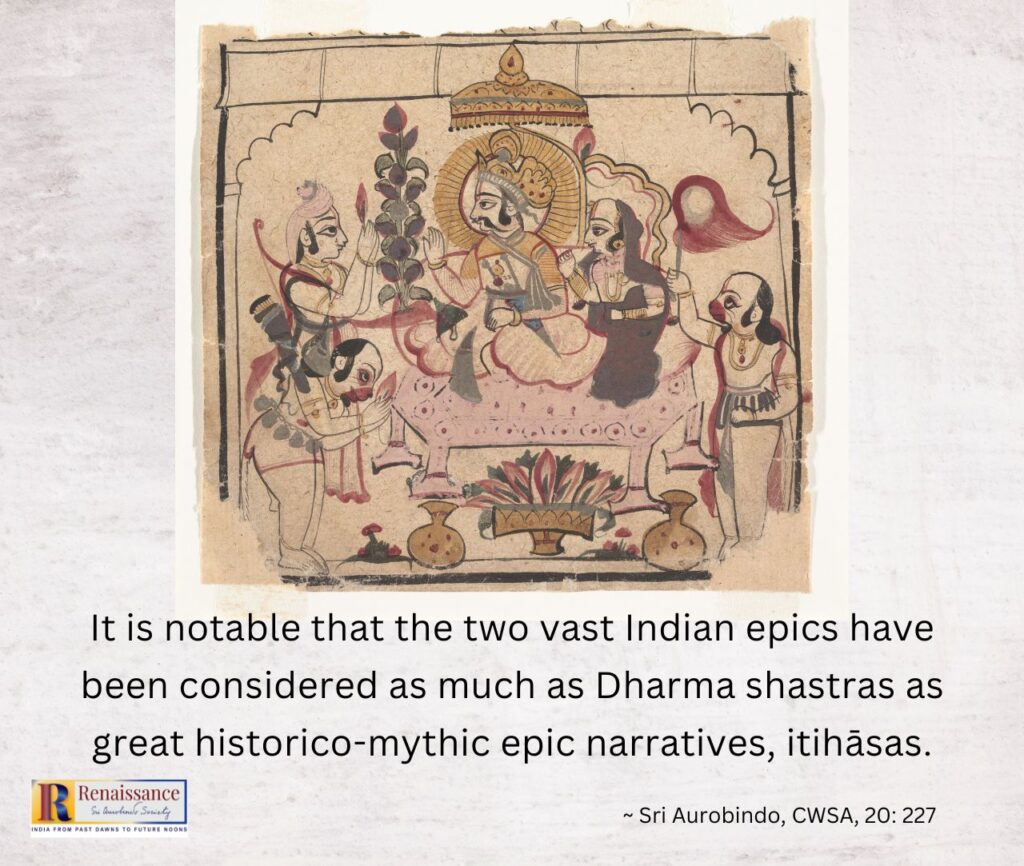
Wealth as an Impediment to Spiritual Pursuit
Interestingly, in some of the same texts as well as others we find another important and contrary view that has also taken hold of the Indian mind to a large extent. As per this view, wealth is an impediment to spiritual pursuit because the aim of all spiritual efforts is to get rid of desire. Accumulation of wealth leads to greater desire for it and thus to lack of happiness and peace. Not to lust after wealth and practicing contentment are held as important virtues for people.
In the Shanti Parva of the Mahābhārata, we find an important passage where Yuddhishtra explains to Arjuna some of the reasons why wealth can be a source of bondage and misery, and the necessity for freeing oneself of the desire for wealth.
“Thou shouldst know that one acquires heaven through contentment. From contentment springs great happiness. There is nothing higher than contentment. . .
Some desire virtue; some, good conduct; and some wealth. One may desire wealth (as a means for the acquisition of virtue). The abandonment, however, of such desire would be better for him. There are many faults attached to wealth and consequently to those religious acts that are performed with wealth. . .
He that desires wealth finds it very difficult to abandon that which should by every means be abandoned. Good deeds are very rare in those that amass riches. It is said that wealth can never be acquired without injuring others, and that, when earned, it brings numerous troubles. A person of narrow heart, setting at naught the fear of repentance, commits acts of aggression towards others, tempted by even a little wealth,. . .
Obtaining wealth which is so difficult of acquisition, one burns with grief if one has to give a portion of it to one’s servants, – with grief, that is, which is equal to what one would feel if one is actually robbed by depredators. If, on the other hand, one does not part with one’s wealth, obloquy becomes one’s share. One, however, that has no wealth, never becomes the subject of censure. Withdrawn from all attachments, such a person can become happy in all respects by supporting life upon what little he may obtain as alms. No one, however, can be happy by the acquisition of wealth. . .
Wealth was created by the Creator for the sake of sacrifices, and man was created by him for protecting that wealth and performing sacrifices. For this, all wealth should be applied to sacrifices. It is not proper that it should be spent for the gratification of desire of enjoyment. The Creator then confers wealth upon mortals for the sake of sacrifices. Know this, O son of Kunti, thou that art the foremost of all wealthy persons! It is for this that the wise think that wealth, without doubt, is nobody’s on earth.
One should perform sacrifices with it and give it away with a trustful heart. One should spend (in gift) what one has acquired, and not waste or spend it in gratifying one’s desire of enjoyment. What use is there in amassing wealth when such proper objects exist in which to spend it?
Those persons of little understanding that give away (wealth) unto men that have swerved from the duties of their order, have to subsist hereafter for a hundred years on ordure and dirt. That men give unto the undeserving and refrain from giving unto the deserving is due to inability to discriminate between the deserving and the undeserving. For this reason, the practice of even the virtue of charity is difficult.
These are the two faults connected with wealth even when acquired, viz., gift to an undeserving person and abstaining from giving unto him that is deserving.
~ Translation by K. M. Ganguli
Accumulation of wealth in the hands of the State may lead to aggression and violence.
That is why in the Arthaśāstra, Kauṭilya speaks of the necessity for a king’s practice of restraining of senses and self-discipline so that he may discharge properly his kingly duties especially dealing with wealth.
Not violating righteousness and economy, he shall enjoy his desires. He shall never be devoid of happiness. He may enjoy in an equal degree the three pursuits of life, charity, wealth, and desire, which are inter-dependent upon each other. Any one of these three, when enjoyed to an excess, hurts not only the other two, but also itself.
~ Translation by R. Shamashastry, p. 17
The same principle will hold true for any individual.
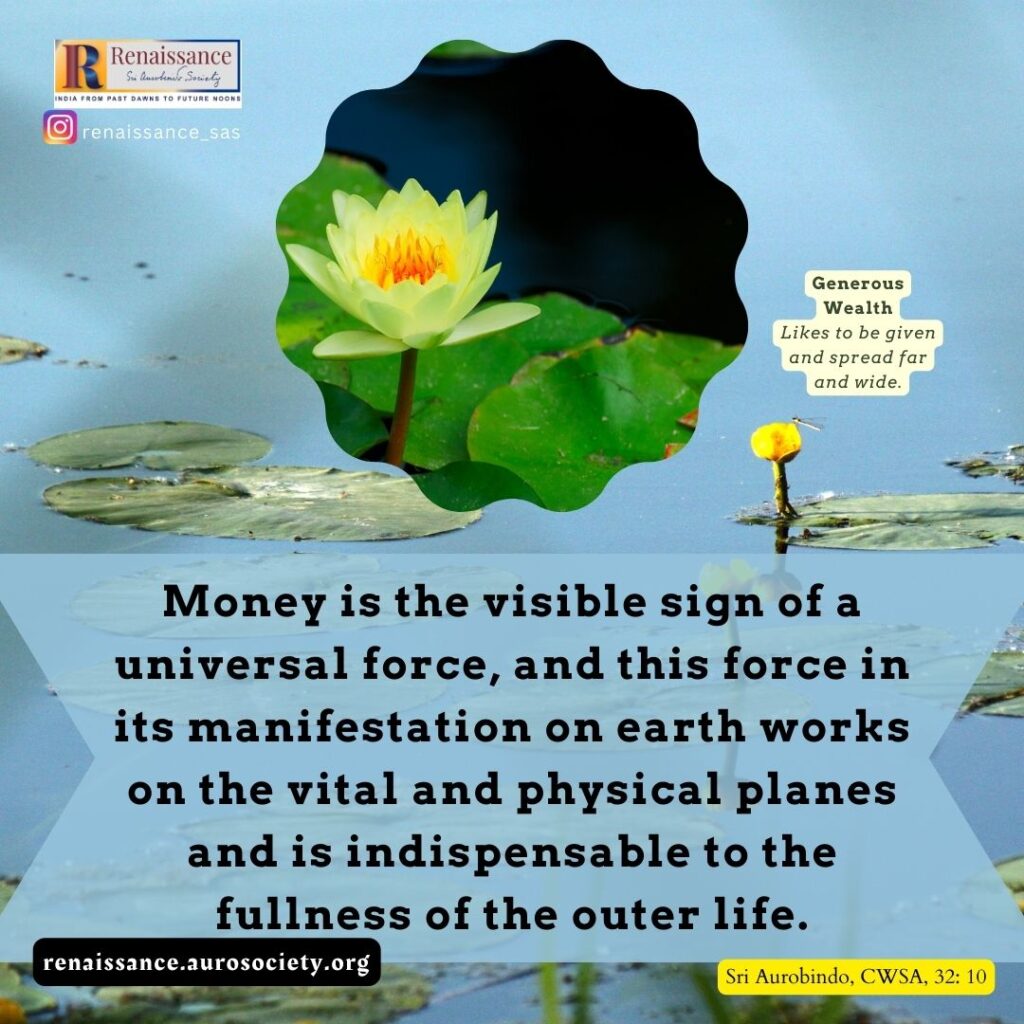
The Deeper Truth
The deeper idea behind speaking of these two radically different approaches is to facilitate a higher integration of the two fundamental truths, to inculcate a value of seeking moderation and balance when it comes to pursuing the goals of wealth accumulation (artha) and fulfilling any desire (kāma).
Thus, we also find many references to a more balanced approach to wealth in the Indian tradition. The suggestion throughout has been that effort to generate and accumulate wealth must be in compliance with the dharma – the way of right living. For example, in the Mahābhārata there are several references to earning wealth in a dharmic way, in a right way. Here is one instance:
कामक्रोधौ पुरस्कृत्य योऽर्थं राजानुतिष्ठति ।
न स धर्मं न चाप्यर्थं परिगृह्णाति बालिशः ॥ (शान्ति पर्व, ७२.७)Through wealth alone can one gain dharma and kāma and the next world as well; but wealth should be earned through dharma, never through adharma.
~ Translation by Badrinath, p. 278
Furthermore, in the famous story of the conversation between Sulabha and Janaka as narrated in the Shanti Parva, we find one of the greatest teaching regarding the right attitude to have toward wealth, especially when one considers the highest aim of human existence – that of pursuing the path of spiritual liberation.
Emancipation does not exist in poverty; nor is bondage to be found in affluence. One attains to emancipation through Knowledge alone, whether one is indigent or affluent.
~ Translation by K. M. Ganguli
Thus, we see, that it is not the money per se but the attachment to the money which leads to bondage.
The right attitude toward money must be: to grow in inner knowledge, to develop a sense of healthy detachment toward one’s material wealth, and to practice inner freedom by gradually giving up the sense of possession or developing an attitude of inner renunciation (which is different from outer renunciation of material wealth and possessions).
This is how a person living in the real-world ought to rightly pursue the goal of artha, as per the Indian wisdom. We find this attitude explained perfectly in the following words by the Mother:
When you are rich and have a lot of money to spend, generally you spend it on things you find pleasant, and you become habituated to these things, attached to these things, and if one day the money is gone, you miss it, you are unhappy, you are miserable and feel all lost because you no longer have what you were in the habit of having. It is a bondage, a weak attachment.
He who is quite detached, when he lives in the midst of these things, it is well with him; when these things are gone, it is well also; he is totally indifferent to both. That is the right attitude: when it is there he uses it, when it is not he does without it. And for his inner consciousness this makes no difference. That surprises you, but it is like that.
~ CWM, Vol. 4, p. 375

In this Issue
In our ‘All Life is Yoga’ series, after taking up the topics of conscious parenting, education, work and human relationships, we now focus on Money.
What is the nature of money? What is the yogic attitude toward money? What are some key insights from the works and vision of Sri Aurobindo and the Mother which we must keep in our consideration as we navigate this tricky area of material well-being for ourselves and our societies and nations, and also prepare ourselves for higher pursuits of life? These and other related questions are addressed through our offerings in this issue.
Light from Sri Aurobindo and the Mother
In the Guiding Light feature titled, The Yogic Attitude Towards Money, we highlight passages from Sri Aurobindo and the Mother regarding the ideal attitude that a sadhaka of Integral Yoga must cultivate towards money. A sadhaka must neither turn with an ascetic shrinking from the money power nor hold a rajasic attachment to it. With an inner detachment from the money power, one should be able to live poorly without any wanting or live richly without any self-indulgence, as per the Divine Will.
Sri Aurobindo on Economic Barbarism, Business and Dharma brings two passages from Sri Aurobindo’s works. In the first passage, Sri Aurobindo describes the nature of economic barbarism behind today’s growing commercialism where the central aim is the pursuit of vital success, possession and enjoyment for their own sake. In the second, he explains that in contrast to today’s commercialism, business when done according to dharma can also be a valid means of sadhana and approach to one’s higher seeking. He quotes relevant examples from the ancient Indian tradition.
Nature’s Abundance and Conquering the Money Power highlights a few passages where the Mother explains that Nature always gives everything in abundance, except money because it is not under Nature’s control yet. We also read about her trance experiences where she concretely ‘saw’ the power of money that is controlled by Asuric forces, and how it can be conquered.
In the feature titled Rhythm of Money Power and the Vaishya Soul-Force we highlight passages from Sri Aurobindo and the Mother where they explain that to control money one needs to follow a certain rhythm of the money-power. This includes spending money in the right way constantly and not hoarding it.
We also feature a passage in which Sri Aurobindo describes the ideal of the Vaishya soul-force. As per Integral Yoga psychology, nature expresses its life powers through four different soul-forces, Brahmana, Kshatriya, Vaishya and Shudra. The term ‘Vaishya’ here refers to the particular soul-force and not a group of people.
Fresh Perspectives in Their Light
In an article titled The Nature of Money and Wealth Creation, M.S. Srinivasan highlights the process of wealth creation in the light of a deeper insight into the nature of money. For a truly efficient and productive creation of wealth, which leads to the enrichment of life, we have to understand the true nature of money and its implications for wealth creation.
Money was the helper; Money is the bar is the title of an article penned by Deven Shah, an Aurovillian. He presents a reflective account of his evolving understanding of the nature of money and developing a yogic approach to engaging with money. Readers will also find here insights on the high ideals set by the Mother regarding the attitude toward personal possession, especially if one aspires to be part of Auroville, the city the earth needs.
What is sādhana of wealth? How does a householder’s purusharthā of earning money take the form of a sādhana? What is the role of inner purification in this? Shyam Krishnakumar writes a reflective piece titled Artha Sādhana as a Spiritual Pursuit addressing these questions while outlining the Vedic vision of life which valued abundance and prosperity as it helped individuals and collectivities move towards higher pursuits of kshātra, jñāna, vidya, kalā and transcendence.
In the piece titled The Stairway of Yoga, Narendra Murty reminds us that the conventional view which creates a dichotomy between ordinary life — and related to that is the pursuit of money — and spiritual life is not true and is in fact, inconsistent with the bold declaration of Isha Upanishad – Isha vasyam idam sarvam.
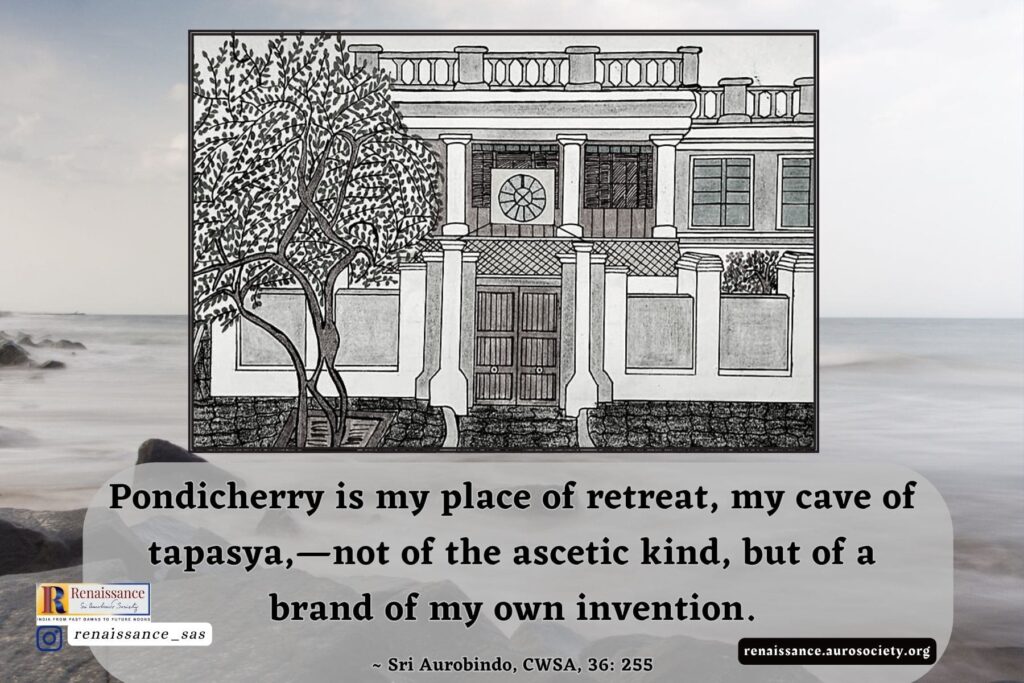
Bonus: On Conscious Travel
As we get ready to host a national seminar on the theme – ‘Experiencing the Spirit of India through Cultural and Heritage Tourism‘, we are delighted to share in our current issue a travelogue in Hindi. Penned by one of our regular contributors, Dr. Charan Singh Kedarkhandi, this is a travelogue with a difference.
We conclude the issue with Part 4 of the ongoing series from Sri Aurobindo Circle archives — Sri Aurobindo’s Interpretation of Indian Culture – Mahabharata by Prema Nandkumar.
As always, we offer this work at the lotus feet of Sri Aurobindo and the Mother.
In gratitude,
Beloo Mehra (for Renaissance Editorial Team)

~ Design: Beloo Mehra

